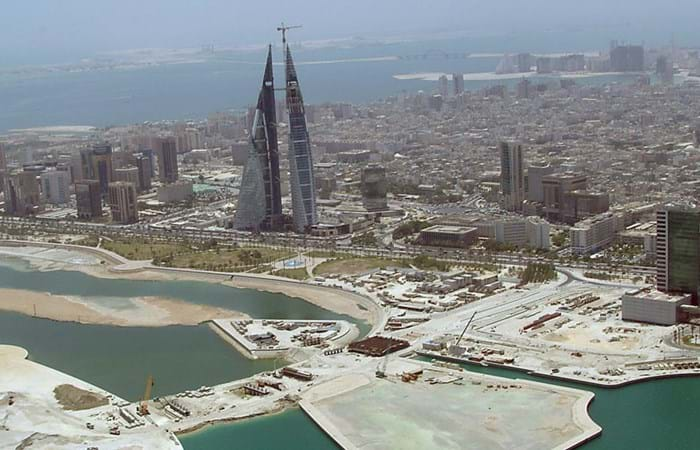The Kingdom of Bahrain is an island located in the Gulf, east of Saudi Arabia and north of Qatar and connected with its neighbour Saudi Arabia since the year 1980 with a 25 km long causeway. The archipelago consists of some 30 islands with a total of 160 km of shoreline and has a population of 800,000. Whereas the surface of Bahrain in the year 1960 was around 650 km<sup>2</sup>, the last decennia have seen a steady increase in the surface till a respectable figure of 740 km<sup>2</sup> in 2007. This increase has been achieved by a various number of small and mayor reclamation projects.
Boskalis Westminster Middle East has participated in almost all of the medium and large reclamation projects since the early years of 1980 and has since then been continuously active in the Kingdom. Most of the reclamation works have been performed at the north shore of the kingdom, where the populations have been
concentrated since long history and where both the airport and commercial ports are located. During this long presence, Boskalis actively worked closely together with various local construction companies resulting in long-term relationships and successful cooperation.

